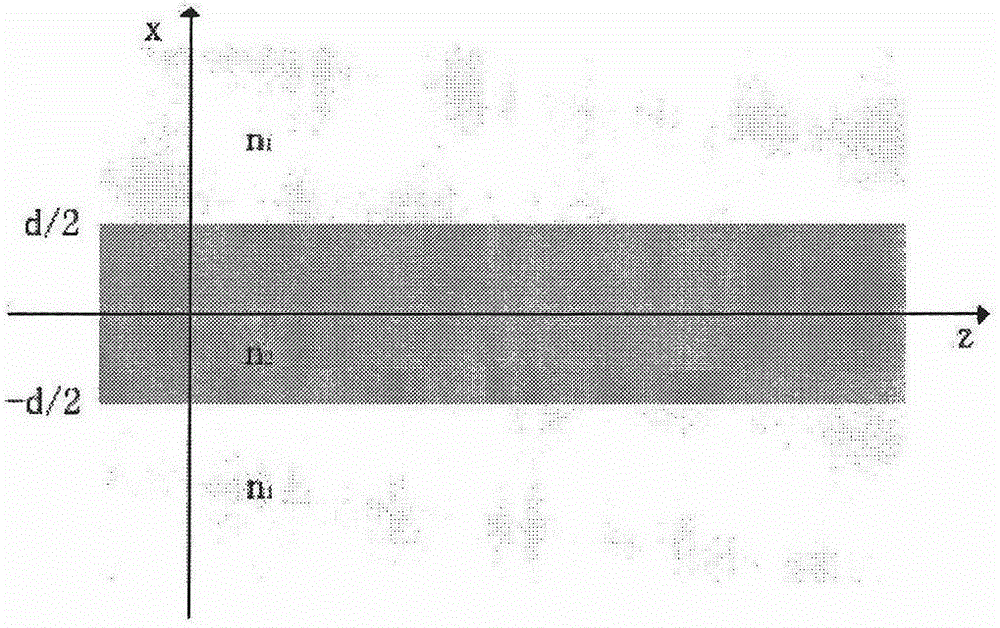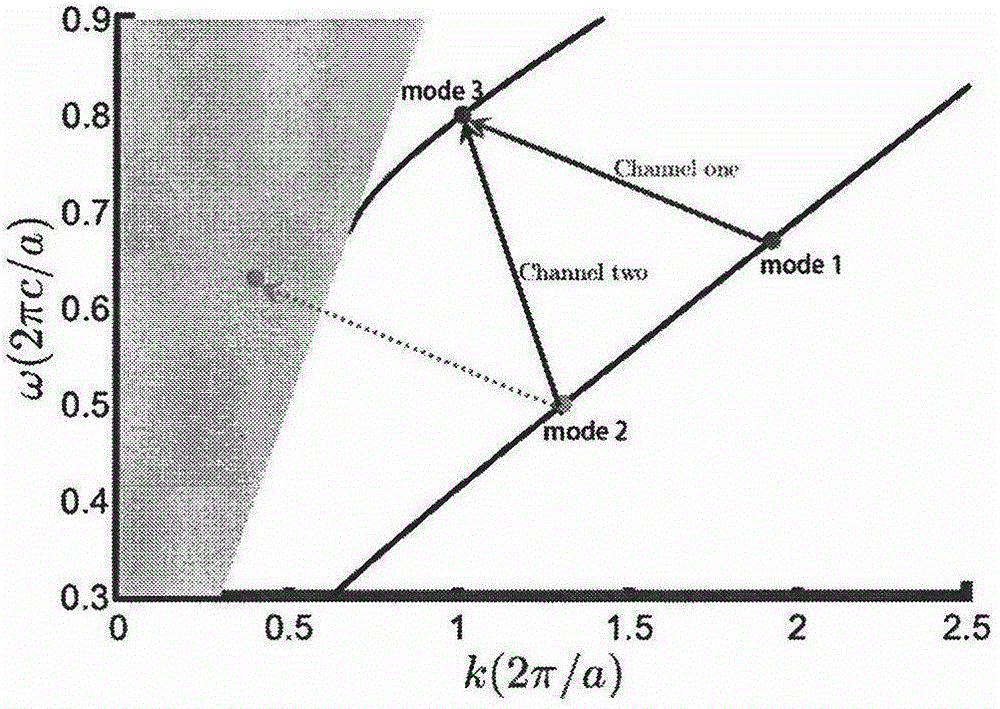Cascade silicon-based waveguide optical isolator
A waveguide optical and isolator technology, applied in the field of dual-frequency silicon-based optical isolators, can solve the problems of additional requirements for optical signal strength, optical isolators are not suitable for large-scale integration, and high isolation rate
- Summary
- Abstract
- Description
- Claims
- Application Information
AI Technical Summary
Problems solved by technology
Method used
Image
Examples
Embodiment 1
[0036] The normalized length a=1 μm is taken, and the waveguide width is taken as d=0.22a. The frequency and wavenumber of mode 1 are respectively taken as: ω 1 =0.67(2πc / a), k 1 =1.92(2π / a); the frequency and wave number of mode 2 are taken as: ω 2 =0.5(2πc / a),k 2 =1.31(2π / a); the frequency and wavenumber of mode 3 are selected as: ω 2 =0.8(2πc / a), k 3 =1.01(2π / a). The modulation intensity δ(x)=1, the waveguide is made of silicon material, and the dielectric constant is taken as 12.25. The lengths of the two modulation regions are l c1 = 5.74a and l c2 =6.63a, this length is the complete conversion length of the mode.
[0037] When the frequency is ω 1 = 0.67(2πc / a) and ω 2=0.5(2πc / a) When the mode 1 and mode 2 optical signals propagate from left to right, the modulation 1 region couples mode 1 and mode 3, and the optical signal is converted from mode 1 to mode 3. Then the mode 3 signal is absorbed by the filter 1 area. During this process, the unaffected Mode 2 s...
PUM
 Login to View More
Login to View More Abstract
Description
Claims
Application Information
 Login to View More
Login to View More - Generate Ideas
- Intellectual Property
- Life Sciences
- Materials
- Tech Scout
- Unparalleled Data Quality
- Higher Quality Content
- 60% Fewer Hallucinations
Browse by: Latest US Patents, China's latest patents, Technical Efficacy Thesaurus, Application Domain, Technology Topic, Popular Technical Reports.
© 2025 PatSnap. All rights reserved.Legal|Privacy policy|Modern Slavery Act Transparency Statement|Sitemap|About US| Contact US: help@patsnap.com



